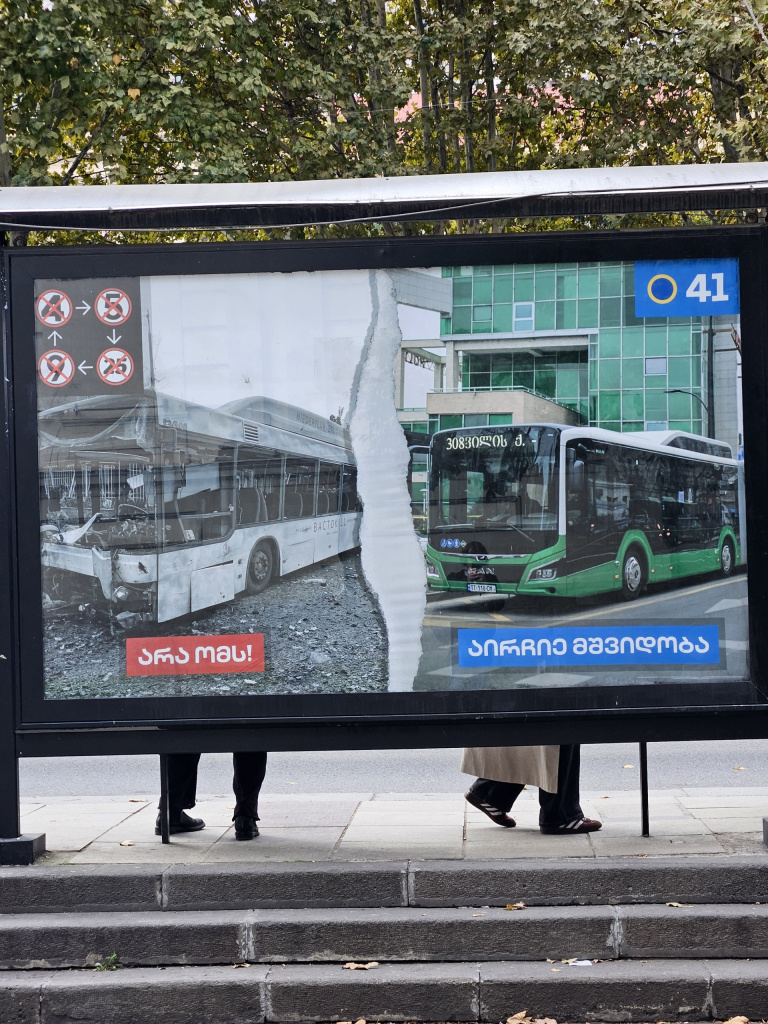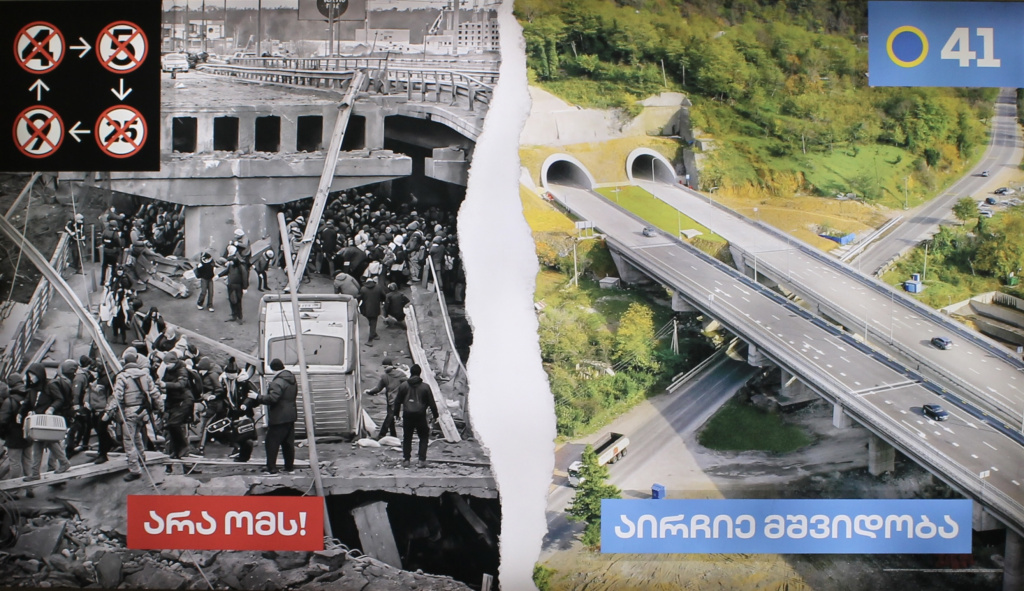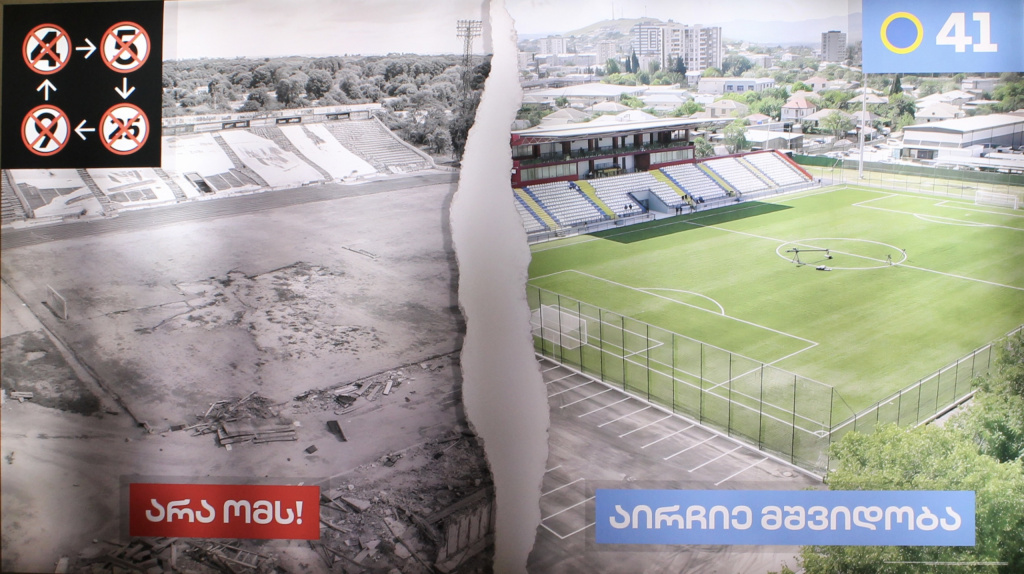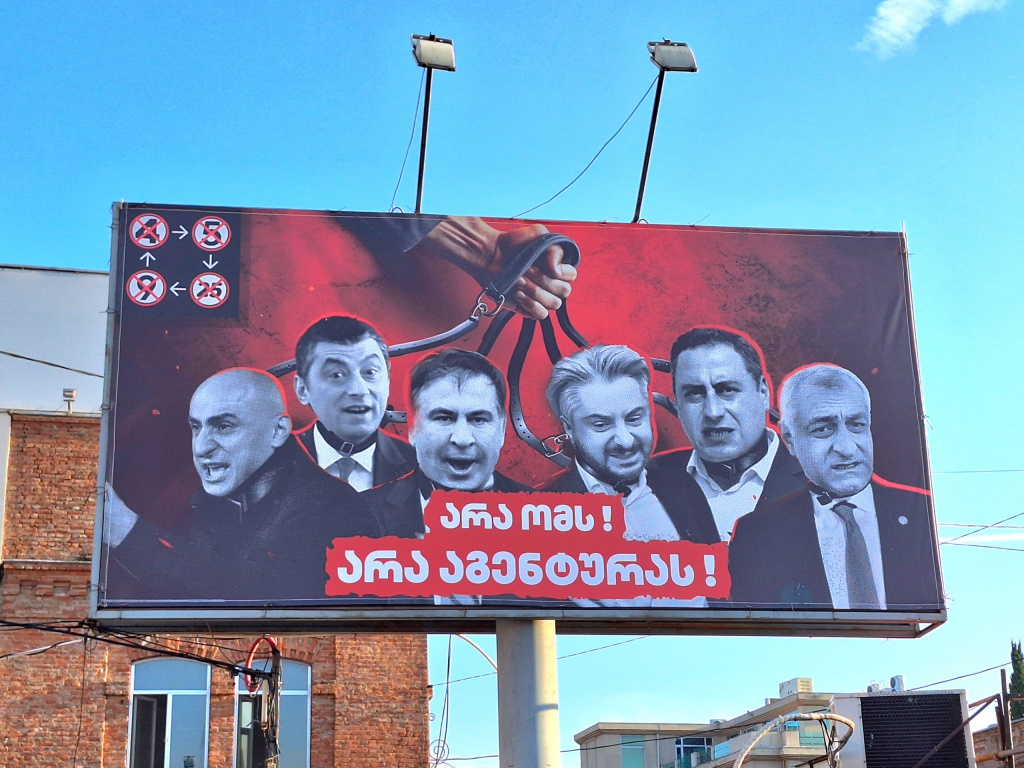The might of Georgian Dream’s election visuals9 min read
As nearly half the world’s population goes to the polls in 2024, voters are increasingly subjected to polarising campaign visuals which play to hidden biases and subconscious feelings to win support for competing candidates. In Georgia, the ruling Georgian Dream party has made this its bread and butter, appealing to deeply rooted negativity towards both the past and the ongoing culture wars. An exploratory survey reveals the effects of these campaigns on Georgian voters in past elections and offers insight into how they may play out as polls open this week.
In Georgia, the importance of large-scale visual materials during the election campaign is increasingly apparent on the campaign trail. Following the large-scale mass demonstrations against the adoption of a Russian-style law “on transparency of foreign influence,” the pre-election environment in Georgia is characterised by a critical degree of polarisation. This has been further fueled by increasingly conspiratorial anti-Western messages from the Georgian government, communicated through vividly styled billboards, posters, and other media.
Election visuals are used strategically as a primary information channel to win voters’ sympathy and shape their opinions accordingly. Conducting election campaigns and designing visuals relies on appeals to a plethora of cognitive biases, including salience, authority, and negative memory biases. These cognitive biases skew our judgement and perspective on the world around us, leaving us vulnerable to manipulation on the campaign trail.
Delivering certain narratives to the broader public via illustrations is quite common in election campaigning. Whether we like the visuals or not, they make an imprint on our subconscious and trigger memories, leaving our opinions to form around the contours left behind.
Georgia and the art of persuasion
As the pre-election period in Georgia enters its crucial phase, Georgian voters are constantly exposed to strong visual messages both on the streets and online. This year, the ruling Georgian Dream party’s election campaign is significantly based on the concept of ensuring Georgia’s neutrality in a potential conflict with Russia. Since the Russian invasion of Ukraine in 2022, members of the Georgian government have repeatedly promoted a conspiracy theory that the West is trying to open a second front in Georgia, accompanied by the accusation that opposition parties are assisting in this effort.
As a result, Georgian Dream’s messages often highlight the contrast between peace and war in billboards and campaign banners. Recently, Georgian Dream campaigns installed billboards on the streets of Tbilisi and other large cities depicting the grim contrast to would-be voters, many of whom may themselves still carry the trauma of Georgia’s post-independence bloodshed.
While the billboards vary, the theme remains consistent: black and white pictures of destroyed buildings, churches, schools, and theatres in Ukraine on the left side, titled “No to War!” and crossed bulletin numbers of the opposition parties on the upper left side. On the right side are colourful pictures of buildings in Georgia (either renovated or built during the Georgian Dream governing period) titled “Choose Peace,” which feature the bulletin number of Georgian Dream on the upper right side.



In addition to propagating the false “War Party” narrative, these visualisations play to the subconscious fears of Georgians who dread a return to the destruction and upheaval of war. This dynamic has long been evident in voting and campaign patterns within Georgia, where the political environment remains highly polarised between the opposition and the ruling party.
Visual bias in election banners: A long, cynical pattern
Misleading election posters are not new in Georgian politics. During the country’s 2018 presidential election, Georgian Dream waged a novel campaign to play upon voters’ biases in support of their preferred candidates. Seeking to avoid a backlash to the increasingly disruptive partisanship at the time, Georgian Dream declined to nominate a candidate of their own. Instead, they supported the campaign of the then-nominally independent Salome Zourabichvili.
The first round of voting resulted in a runoff between her and the candidate from the largest opposition party, the United National Movement (UNM), alarming Georgian Dream leaders and prompting a more overt strategy. Visuals from the second round of elections prominently featured Georgian Dream party leaders, despite the fact that Zourabichvili was neither their appointed candidate nor even a party member.
Georgian Dream appealed to what is commonly called salience bias, when individuals prioritise and make decisions based on some factors or aspects of an event that stand out, rather than focusing on the bigger picture. In this particular case, the Georgian Deram party leaders took the spotlight in campaign ads, completely overshadowing the actual candidate and subtly suggesting to voters that a vote for her was a vote for their agenda.
Georgian Dream’s campaign know-how also benefited from the public’s tendency towards authority bias or their preference for the statements of those in power. Since 2012, the ruling party has won every election held in Georgia and reaped the electoral benefits of incumbency to the fullest. In the case of Zourabichvili’s 2018 candidacy, it delivered nearly 60% of second-round votes, and ultimately the presidency.
The 2018 election campaign also illustrated Georgian Dream’s heavy reliance on negative memory bias in their campaign messaging, which assumes that unpleasant memories are more easily recalled and influential in public decision making. For Georgian Dream, the spectre of UNM’sBloody Nine Years” has long been fodder for political appeals to this bias, as the suppression of protests and sustained human rights concerns during the Mikheil Saakashvili era continue to be a painful memory for many Georgians. Pro-Georgian Dream advertisements rarely miss an opportunity to reinforce this negative memory and its association with UNM, while subtly including new attacks against other opposition forces.
A few weeks before election day in 2018, a “No to the UNM, No to the cruelty” billboard appeared in Tbilisi, with the former president and chief of United National Movement, Mikheil Saakashvili, in the centre surrounded by his supporters. Similar tactics would later reemerge in 2021, when a new set of posters emerged across Tbilisi. These featured Saakashvili alongside other UNM members and independent journalists beneath a rainbow, playing upon the anxieties of conservative Georgians towards progressive attitudes regarding LGBTQ+ rights.
This narrative is not entirely new, but an analysis of the visual elements of this message provides an interesting look into how campaigns appeal to our biases. The 2018 billboard is framed with blood, and the people portrayed in it are shown as ridiculous and unserious. The blood is a deep red — the signature colour of the United National Movement — and one typically associated with torture and pain. Disseminating these visuals before the elections naturally triggered negative memories for many people who experienced the previous government’s contentious rule, and left little room for focus on their policy or other political subjects at issue in the election.

With elections now in view for Tbilisi voters once again, these posters have made a noticeable return to the Georgian capital’s streets. Some depict opposition leaders being led by leash by the so-called “Global War Party”, while others depicted massive Georgian banners flying through the sky in stark contrast to the grim themes of Georgian Dream’s other campaigns.
Our subconscious by the numbers: How election campaign visuals stick in our minds
Lossi 36 conducted a small exploratory survey among a hundred Georgians to better understand the importance of visual perception during past election campaigns. Out of 100 surveyed, 75 respondents could remember at least one poster, billboard, or flyer from previous election campaigns. The results varied across different parties’ promotional billboards, but a few visuals were named several times. In particular, 11 people remembered the “Bloody Nine Years” billboard, 9 remembered Georgian Dream’s leaders depicted on Zourabichvili’s campaign posters, and 4 remembered the extravagant visuals and videos of the then relatively new party, Girchi.
The results make clear that powerful visuals with solid messages, particularly those exhibiting characteristics of visual bias, can be vividly recalled even years after their creation. The greater a campaign appeals to cognitive biases in its visuals, the more likely it will be remembered, even during the next elections. Both examples described above were sharp, concrete, and aimed to influence voters’ decision-making by tactically involving negative memory, authority, and salience biases. The survey result shows that the choice of illustrative storytelling in election campaigns turned out to be a zero-sum game for Georgian Dream and a potential advantage for the upcoming elections, as the main design of some visuals remained relevant for their current campaign, too.
The subtle power of campaign imagery
Campaigning and reaching hundreds of thousands of potential voters has become cheaper and more effective through social media, where the repetition of eye-catching visuals with powerful messages is met with likes, shares, and replies.
These visual messages are especially effective when they tap into entrenched narratives, such as the potential threat of LGBTQ+ propaganda, pseudo-liberalism, or Georgia being dragged into war. Central government officials have constantly amplified all these narratives throughout the last few years. Combined with the pre-campaigning and actual campaigning strategies, Georgian Dream ensures that the visuals are crafted in a way that Georgian voters are bombarded with suggestions of opposition parties being associated with war, repression, and pseudo-liberalism, eventually resulting in their loss in elections. This is not, however, a strategy without risks. Georgian Dream’s recent ad campaign featuring destroyed Ukrainian cities drew outrage from many Georgians, who chafed at their cynicism.
In such a highly polarised election environment, it may be that Georgian Dream is overplaying its hand. With polling showing many Georgians willing to vote out the Georgian Dream government in favour of something new, the party will face its greatest challenge yet. But as Georgia looks ahead to the final week of campaigning, voters will confront more than just the issues facing their country; they’ll be facing decades of campaign posters, billboards, and television ads as well.



